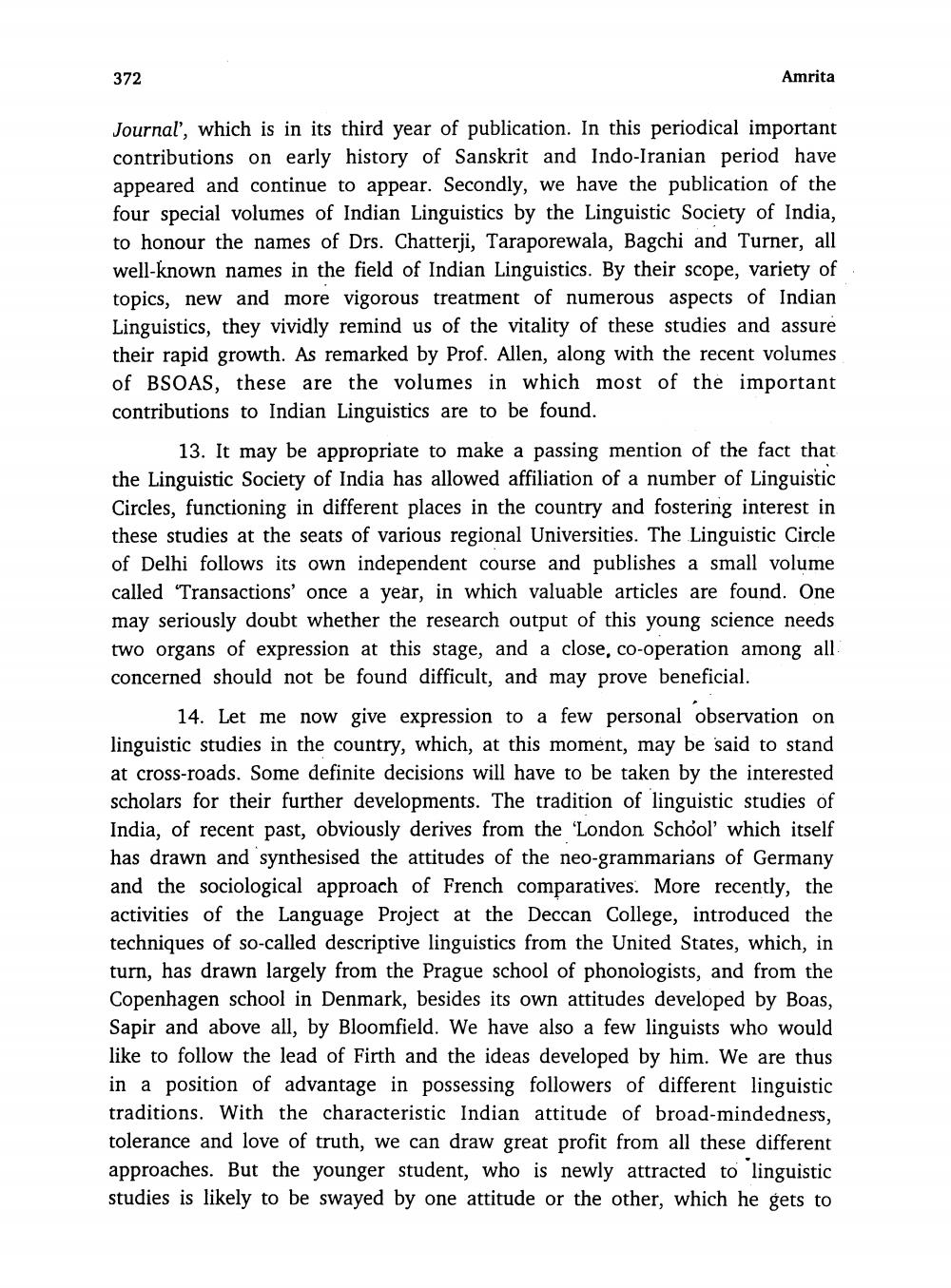________________
372
Amrita
Journal', which is in its third year of publication. In this periodical important contributions on early history of Sanskrit and Indo-Iranian period have appeared and continue to appear. Secondly, we have the publication of the four special volumes of Indian Linguistics by the Linguistic Society of India, to honour the names of Drs. Chatterji, Taraporewala, Bagchi and Turner, all well-known names in the field of Indian Linguistics. By their scope, variety of topics, new and more vigorous treatment of numerous aspects of Indian Linguistics, they vividly remind us of the vitality of these studies and assu their rapid growth. As remarked by Prof. Allen, along with the recent volumes of BSOAS, these are the volumes in which most of the important contributions to Indian Linguistics are to be found.
13. It may be appropriate to make a passing mention of the fact that the Linguistic Society of India has allowed affiliation of a number of Linguistic Circles, functioning in different places in the country and fostering interest in these studies at the seats of various regional Universities. The Linguistic Circle of Delhi follows its own independent course and publishes a small volume called "Transactions' once a year, in which valuable articles are found. One may seriously doubt whether the research output of this young science needs two organs of expression at this stage, and a close, co-operation among all concerned should not be found difficult, and may prove beneficial.
14. Let me now give expression to a few personal observation on linguistic studies in the country, which, at this moment, may be said to stand at cross-roads. Some definite decisions will have to be taken by the interested scholars for their further developments. The tradition of linguistic studies of India, of recent past, obviously derives from the 'London School which itself has drawn and synthesised the attitudes of the neo-grammarians of Germany and the sociological approach of French comparatives. More recently, the activities of the Language Project at the Deccan College, introduced the techniques of so-called descriptive linguistics from the United States, which, in turn, has drawn largely from the Prague school of phonologists, and from the Copenhagen school in Denmark, besides its own attitudes developed by Boas, Sapir and above all, by Bloomfield. We have also a few linguists who would like to follow the lead of Firth and the ideas developed by him. We are thus in a position of advantage in possessing followers of different linguistic traditions. With the characteristic Indian attitude of broad-mindedness, tolerance and love of truth, we can draw great profit from all these different approaches. But the younger student, who is newly attracted to linguistic studies is likely to be swayed by one attitude or the other, which he gets to




